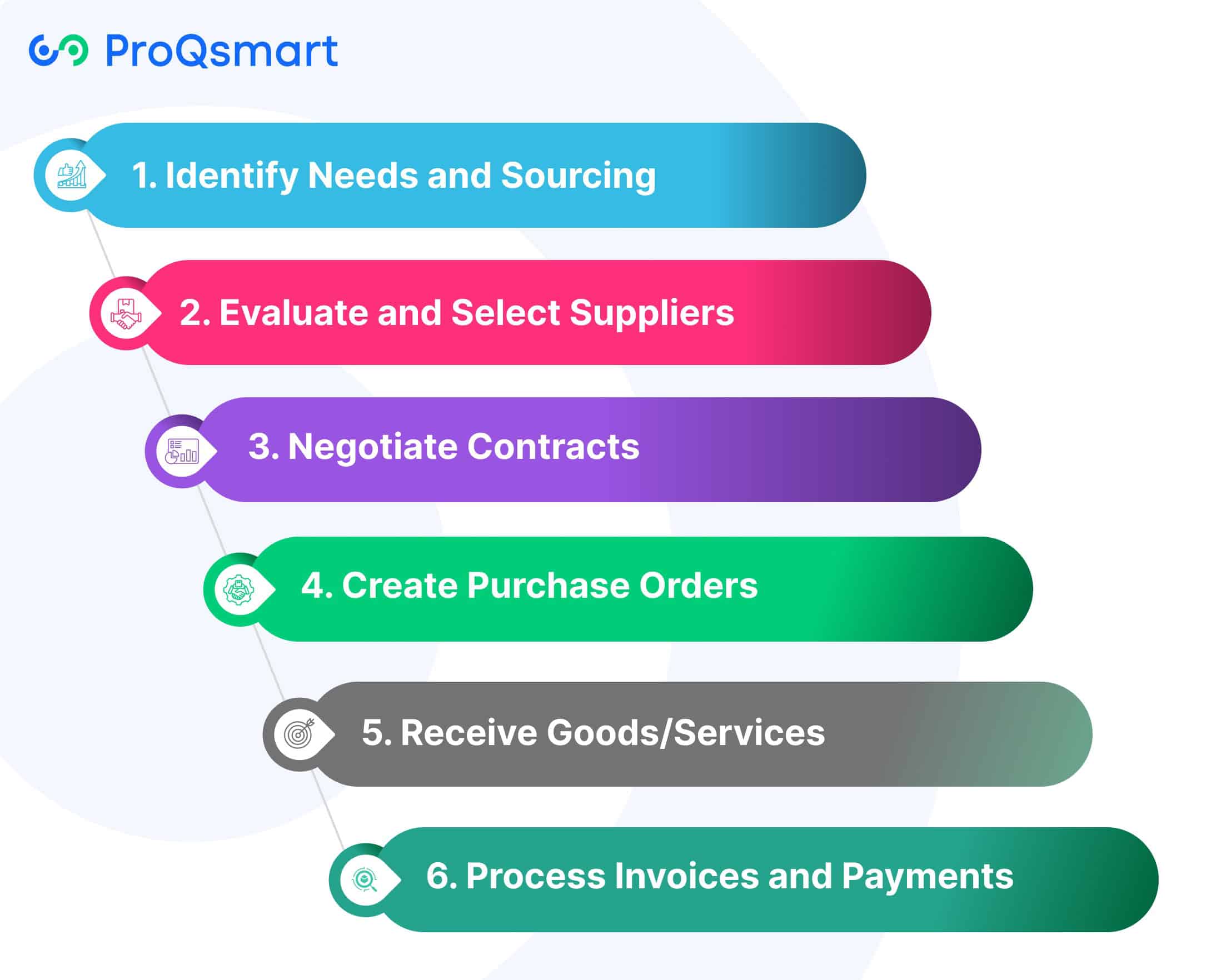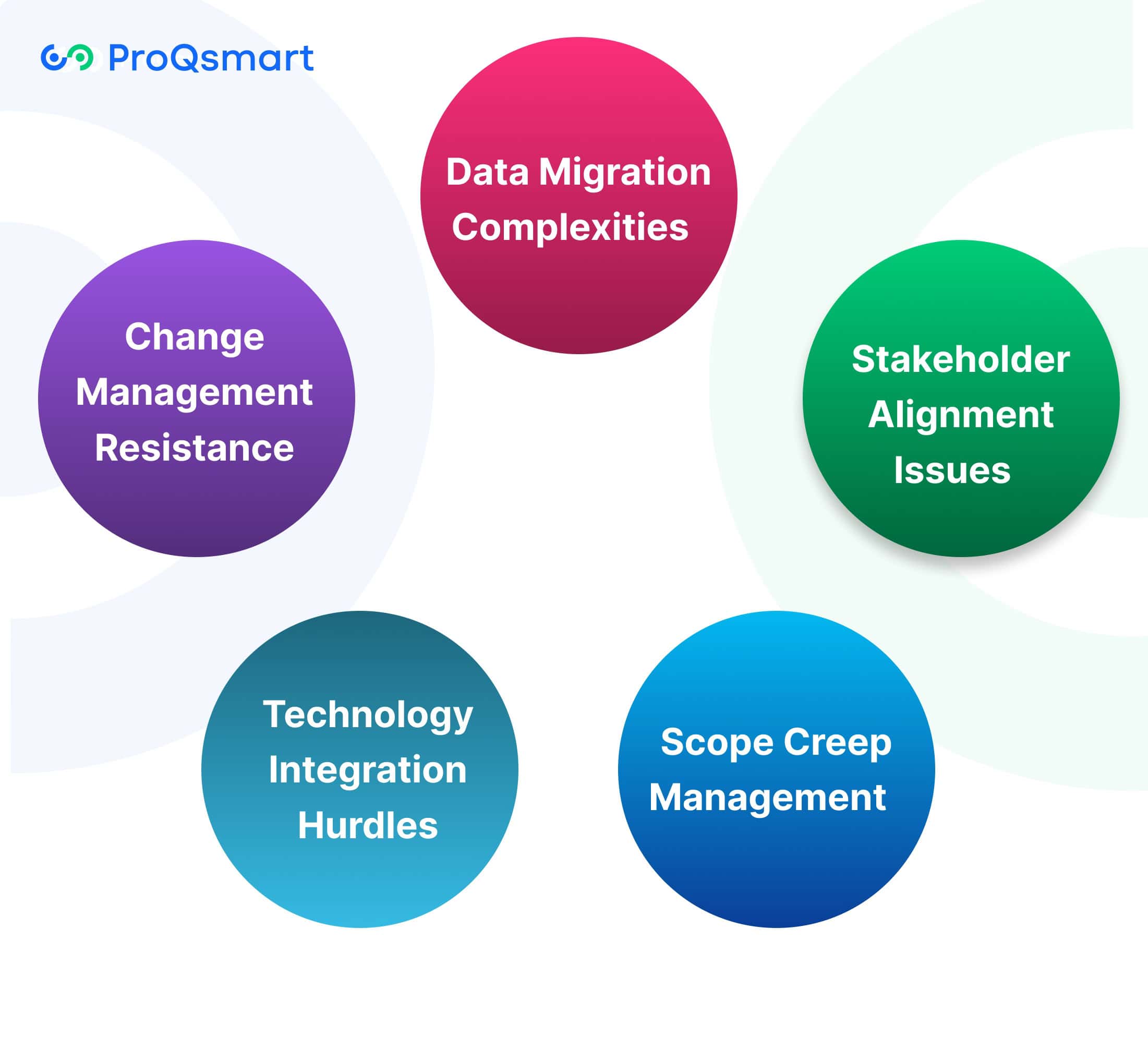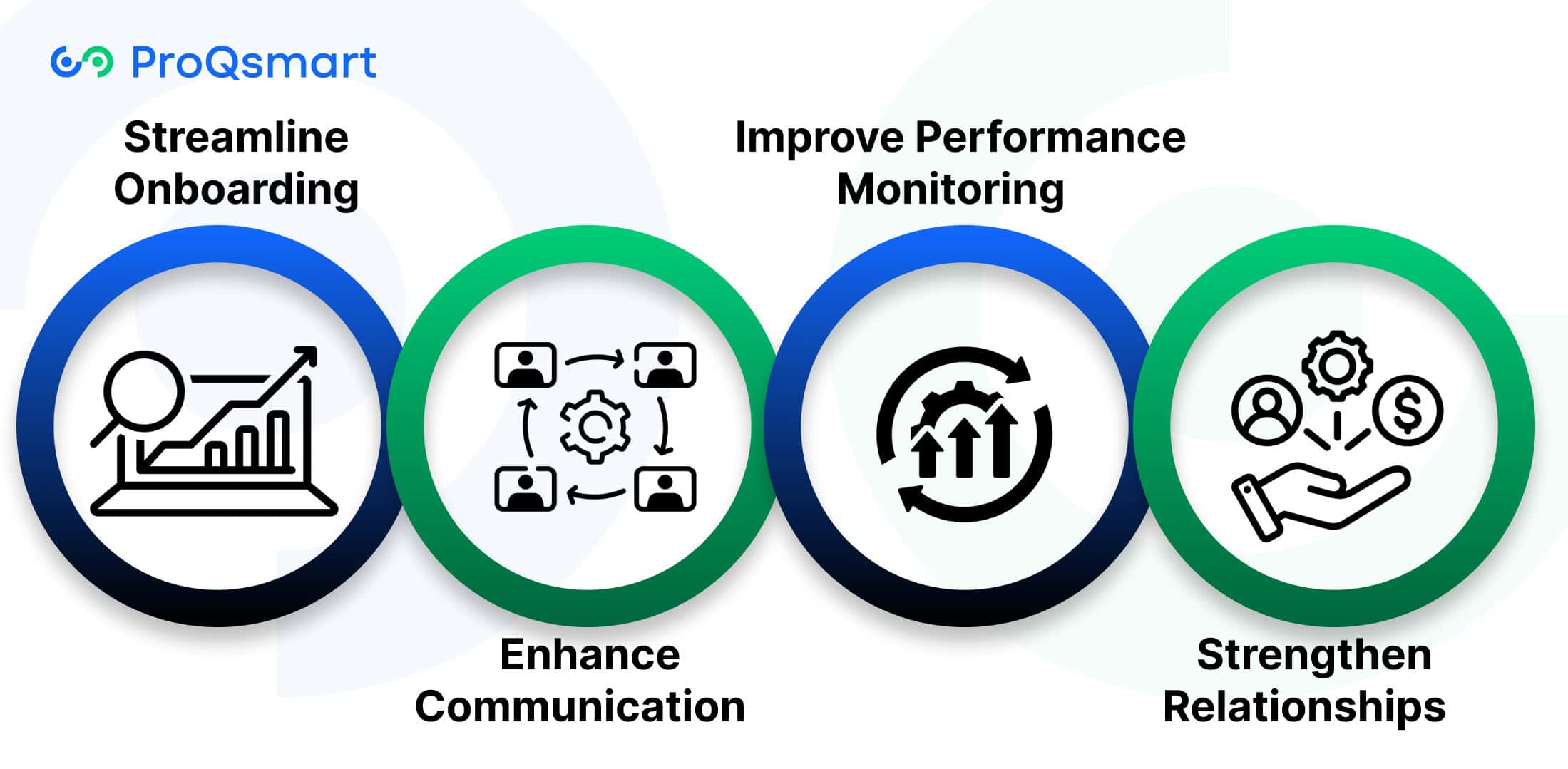Source to Pay (S2P) is an integrated, end-to-end process that automates and simplifies all procurement-related activities—from finding the right suppliers to making the final payment. It unites sourcing and procurement into a single, more effective workflow.
This integration gives organizations the power to more efficiently manage supplier relationships, negotiate contracts and process invoices. By implementing S2P, companies can achieve increased spend visibility, improved adherence to procurement policies and practices, and decreased operational costs.
It’s an approach that uses new technologies such as e-procurement platforms and analytics tools to make complicated tasks easier and drive better decisions. For procurement professionals, S2P provides a step-by-step approach to streamline processes and deliver value throughout supply chains.
In this guide, we’ll look at the core elements, advantages, and best practices to effectively adopt S2P within your organization.
What is Source-to-Pay (S2P)?
Source-to-Pay (S2P) is a comprehensive procurement process that integrates every step from sourcing suppliers to making payments. It combines strategic procurement activities—such as supplier selection, contract negotiation, and risk management—with transactional processes like purchase orders, invoicing, and payments.
By unifying these functions, S2P enhances visibility, improves collaboration, and eliminates inefficiencies. It ensures that supplier discovery and contract management seamlessly align with spend analysis and payment workflows, reducing errors and optimizing cost savings.
Modern S2P solutions leverage automation and AI-driven insights to streamline procurement, enhance compliance, and drive smarter decision-making. By centralizing procurement operations into a single, data-driven framework, S2P turns procurement into a strategic enabler of business growth and efficiency.
Explore the S2P Process

Source-to-Pay (S2P) is a more inclusive term that describes the entire procurement process, from initial sourcing through the payment of suppliers. S2P bundles all these activities into a single, efficient workflow. By doing so, it protects efficiency, visibility, compliance, and control on both strategic and operational procurement activities.
This holistic approach reduces the complexity of bringing many tools and datasets together, allowing organizations to focus on their strategic goals while still meeting their operational needs.
1. Identify Needs and Sourcing
The S2P process starts with evaluating organizational needs, determining which products and services are critical to maintaining operations. Providing clear documentation of these needs will help you stay in step with procurement policies and budget limitations.
Creating and implementing sourcing strategies aligned with overall organizational goals will lead to the most cost-effective decisions. Involving stakeholders from the start encourages early buy-in and collaboration, collecting useful feedback to develop strong sustainable sourcing guidelines.
2. Evaluate and Select Suppliers
A formalized approach to evaluating suppliers is essential. Criteria like price, quality, and ability to deliver should inform this evaluation.
Establishing fair evaluation processes ensures optimal supplier selection while fostering long-term partnerships. ProQsmart backs this phase up with tools such as supplier performance monitoring and e-tendering, further improving supplier collaboration.
3. Negotiate Contracts
Smart negotiation leads to better terms in the contract. Lastly, all agreements need to be in writing to ensure smooth implementation.
ProQsmart’s AI-driven tools power up the competitive bidding process. They foster competitive bidding and ensure compliance with it while controlling for costs and transparency in negotiations.
4. Create Purchase Orders
Automation becomes especially important when creating purchase orders. Syncing purchase orders with original contract terms minimizes discrepancies, giving departments more time to focus on tracking and compliance.
With ProQsmart’s automated workflow, teams can streamline internal collaboration, document all necessary regulatory requirements, and save heaps of time in the process.
5. Receive Goods/Services
Accurate receipt verification helps ensure that goods received are in accordance with quality specifications. Quick documentation of discrepancies clears them up right away.
Automated tools such as those available in ProQsmart make this step easier while improving supply assurance.
6. Process Invoices and Payments
AI-driven tools help automate invoice processing and accelerate approvals. Providing visibility into payment cycles helps you pay your suppliers on time, keeping both cash flow and important supplier relationships healthy.
ProQsmart’s cost-saving features put you in total control of your spend management strategies.
Common Challenges in S2P Implementation

Implementing an end-to-end Source-to-Pay (S2P) solution comes with a myriad of challenges. These challenges can dramatically impact the project’s speed and ultimate success.
These challenges encompass data collection and management, stakeholder engagement and buy-in, scope creep, technology implementation and integration, and change management. A more proactive approach to addressing these areas is needed if we are to get to a more streamlined process and meaningful outcomes.
Data Migration Complexities
Migrating data from outdated systems into modern S2P platforms can be a delicate operation that takes a great deal of care and technical expertise. Knowing that any inaccuracy can cause disastrous disruptions, it’s essential to maintain trust in the data from end to end.
Creating a holistic data migration strategy, including extensive testing and validation, reduces exposure to risk.
Stakeholder Alignment Issues
Engaging stakeholders from the outset is critical for ensuring everyone’s objectives are aligned. Keeping updates frequent and lines of communication open helps to stop mixed messages and competing priorities in their tracks.
For instance, when demonstrating how automation will decrease maverick spending you can build collective support. Resolving issues through open, collaborative dialogue helps maintain focus and fosters ownership of the project.
Scope Creep Management
Having a very clear definition of your project scope prevents scope creep. A well-defined change control process for features requests and evaluation at regular intervals helps maintain focus on the original goals.
At the same time, for example, having all policies and templates documented – a challenge for 70% of organizations – guarantees you stick with the initial scope.
Technology Integration Hurdles
Connecting new S2P solutions with legacy systems requires a comprehensive approach. Doing extensive testing of integrations and identifying what might be an obstacle beforehand makes for a seamless flow of data.
When the suite is as tightly integrated as possible, it makes processes easier and improves functionality across the board.
Change Management Resistance
One major cause of resistance to change is employee fear. Offering hands-on training and well-defined support systems, such as helpdesks, smooths the transition.
Linking to clear, tangible benefits, like a reduction of supplier risk through strategic sourcing, will guarantee staff buy-in to the new system.
Overcome S2P Implementation Challenges
Taking on Source-to-Pay (S2P) technology really starts to ramp up efficiency, giving you far more visibility and control. Overcoming implementation challenges goes beyond simply planning for execution. Failure to do so puts organizations at risk of value leakage, which research found happens in almost half of S2P processes because of non-compliance.
Below, we outline proven strategies to overcome these challenges.
Plan Robustly
Having a detailed project plan filled with specificity and detail is the key to successful S2P implementation. This plan needs to have specific timelines, dedicated resources, and assigned accountability. Creating milestones makes it easier to put blinders on and measure progress against those milestones, holding everyone involved accountable.
For instance, if a department has the necessary resources, automating invoice approval or three-way matching processes can help speed up workflows and reduce human error.
Communicate Clearly
Having open and transparent communication channels between all stakeholders involved is key. Communicating regularly about your implementation’s progress, challenges, and successes will help build a culture of trust and collaboration.
Creating pathways for constructive feedback, like regular check-ins, creates opportunities to adjust before a concern escalates.
Engage Stakeholders Proactively
Stakeholder engagement helps to maintain focus on big-picture goals and intent. Workshops or collaborative meetings can be used to gather input, particularly when integrating tools like ProQsmart, which facilitates supplier management and compliance.
Manage Change Effectively
Change management frameworks provide a roadmap for employees to follow through the tumult of change. For example, educational support like ProQsmart’s customized buying approach makes it easier to follow procurement policies and helps avoid contract breaches.
Integrate Systems Strategically
A phased integration of the S2P solutions makes sure that there is little to no disruption. ProQsmart’s automation and optimization features including e-tendering, workflow management, and process automation allow data to flow freely for increased efficiency and effectiveness.
Improve Supplier Management with S2P

S2P (Source-to-Pay) provides a holistic approach to streamlining all procurement activities, from purchase requisition to payment, and improving supplier management. S2P empowers organizations by bringing together strategic sourcing, fostering strong supplier relationships, and streamlining contract management. This strategy simplifies procurement activities, reducing expenses and improving overall efficiency.
With automation, S2P provides a 360-degree view of supplier data, enabling better decision-making and improving supplier performance. Here, we dive deeper into ways you can improve supplier management with S2P.
Streamline Onboarding
A centralized, standardized onboarding process not only provides a consistent supplier experience, it eliminates the opportunity for delays. Implementing digital tools makes documentation and compliance checks easier and less prone to manual errors.
For instance, automating supplier registration and validation accelerates speed to integration. Establishing open lines of communication with new suppliers ensures a smoother onboarding process, enabling suppliers to adapt to your organization’s needs in no time.
Enhance Communication
Setting regular communication channels, like bi-weekly updates or quarterly performance reviews, ensures that suppliers are always in the loop. Collaborative platforms facilitate conversations in real-time, keeping everyone on the same page and informed.
Soliciting supplier feedback on procurement processes encourages continuous improvement, building a culture of trust and innovation.
Improve Performance Monitoring
With metrics such as on-time delivery rates or defect percentage, you can easily measure and track supplier performance. Further, tools such as dashboards help to visualize these metrics, providing PR practitioners with actionable insights.
Regular performance reviews not only keep suppliers on track with organizational objectives, but allow for a proactive approach to strengthen performance.
Strengthen Relationships
Creating relationships through supporting supplier recognition programs and working toward common goals improves loyalty and trust. Honest and open dialogue leads to better alignment and collaboration, producing mutually beneficial outcomes.
By acknowledging supplier value add, like exceptional delivery performance, you build even stronger relationships.
Select the Right S2P Solution
- Selecting the best source-to-pay (S2P) solution is one of the most important decisions procurement leaders make when it comes to transforming their procurement activities and driving quantifiable business results. A full-featured, effective S2P platform streamlines the entire sourcing-to-payment cycle.
- It improves market transparency, encourages greater collaboration with suppliers, and helps align procurement processes with wider organizational goals. To be certain that solution is the right fit for your unique needs, you’ll want to focus on a few important criteria. Scalability is critical for accommodating future growth, while user-friendliness ensures smooth adoption across teams.
- Secondly, integration capabilities are key. To provide true real-time visibility and workflows unified across the enterprise, a platform needs to easily and fully connect with the current IT infrastructure.
- Of all S2P features, automation tools rank highest in their ability to speed up purchase order approvals and improve resource allocation. Advanced reporting functionalities support data-driven decisions, and supplier management systems help to build better relationships with suppliers through performance monitoring and compliance tracking.
- ProQsmart provides innovative, AI-driven solutions that automate procurement workflows and help organizations align their priorities and budgets. These tools make it easier to manage subcontractors and enforce compliance with regulations and transparency requirements.
- Evaluating potential platforms should include well-documented demos, feedback from end-users, and a complete total cost of ownership analysis. Aligning the solution with organizational goals helps ensure the solution returns significant strategic value like cost savings of 30% or more.
- Ultimately, a strong S2P platform such as ProQsmart can help organizations realize their operational excellence goals and drive sustainable growth.
Align S2P with Digital Transformation
Source-to-pay (S2P) integration with digital transformation is key to today’s smart procurement. Aligning S2P with today’s technological advancements allows organizations to improve efficiencies and drive down costs. This alignment increases efficiency across workstreams and creates robust, data-driven insights that help shape strategic decisions.
Integrate with Existing Systems
Providing seamless integration of S2P solutions with existing ERP and other financial systems is key. An interconnected ecosystem ensures the smooth movement of data and removes duplications.
Begin by creating a comprehensive integration roadmap that includes high-level integration milestones, dependencies, and timelines. For example, focus first on connecting S2P modules such as supplier management with financial reporting tools to allow real-time tracking of budgets.
Thorough testing is just as critical—confirm data is accurate, system works as intended, and that users can adapt to avoid future mistakes. ProQsmart is truly on the cutting edge in this space by automating workflows, ensuring compliance, and providing integration with budget-driven procurement tools such as S2P.
Promote Data-Driven Decisions
Utilizing analytics tools effectively is an imperative element of a successful S2P deployment. Through platforms such as ProQsmart, procurement teams can leverage AI-powered insights to improve strategic sourcing and monitor supplier performance.
By sharing these reports with stakeholders, you can promote transparency that enhances the alignment between your procurement goals and your organization’s overall objectives. By allowing for real-time tracking of spending trends, S2P quickly identifies opportunities for cost-savings.
It helps you forecast future disruptions, such as out-of-stock items during busy seasons.
Foster a Culture of Innovation
Embedding innovation into procurement practices nudges the use of the most advanced technologies. Automating processes such as e-tenders and electronic subcontractor management are not only easy on user’s hands – they’re good for the environment by improving collaboration.
ProQsmart’s AI-driven data solutions help procurement teams find savings, control capital expenditures, and build resilience into supplier relationships.
Conclusion
Source-to-Pay is more than just a procurement process—it’s a strategic enabler that drives efficiency, enhances supplier collaboration, and aligns procurement with business goals. By leveraging the right S2P solution, organizations can eliminate inefficiencies, improve compliance, and gain real-time visibility into their procurement operations.
ProQsmart empowers businesses with an intelligent, AI-driven S2P platform that streamlines every stage of the procurement journey—from sourcing to payments. Ready to transform your procurement strategy? Book a demo with ProQsmart today and experience the future of Source-to-Pay.




